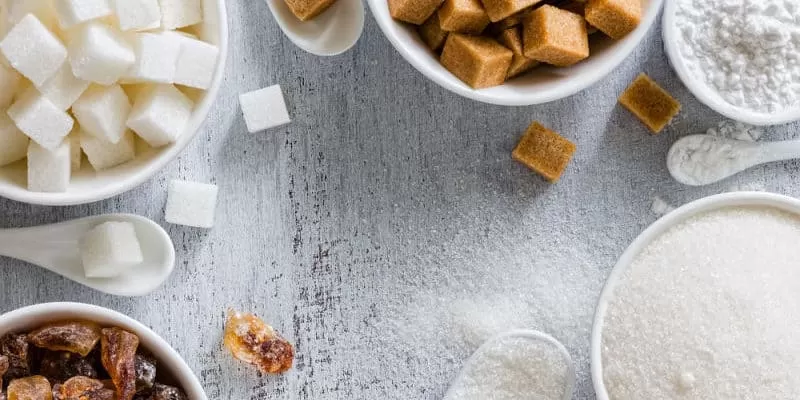Sugar, when consumed in moderation, helps the body maintain an optimal energy balance, as it is actually made up of glucose, which our body needs to control cellular functions in the brain. Most glucose is found in two types of sugar: cane and beet. Is there a difference between them and which one is more useful? Our experts were looking for answers to these questions.
Product Features

For the manufacture of beet sugar, sugar beet is used — a plant grown exclusively in temperate climates. This is due to the culture’s need for a significant amount of moisture. Beetroot is a one-year-old plant, therefore it requires an annual planting. Ripe fruits are usually harvested at the end of autumn or with the advent of winter.
The product is cleaned from the remnants of the earth, the tops are removed, then they are thoroughly cleaned, and, finally, the raw sugar is extracted by pressing. As a result of this simple process, juice is obtained, which is filtered, then dried — sweet crystals are obtained, which are completely ready to be eaten. This is beet sugar.
Sugarcane is a classic “inhabitant” of most tropical countries. The process of planting and harvesting is much simpler than in the case of sugar beets. This plant can produce a crop for more than one year in a row, without requiring additional plantings. The collection of raw materials is carried out by cutting the cane stems, which are then crushed in the factory in order to separate the juice from the cane pulp. It is filtered, heated and formed into crystals.
ON A NOTE. If we are talking about refined sugar, no matter which beet or cane sugar, such a product is cleaned of impurities to the maximum and has a snow-white color. The taste qualities of refined beet and cane sugar are identical. In this case, it is possible to determine the initial raw materials only in laboratory conditions. Therefore, when talking about the comparison of beet and cane, it is appropriate to take into account only the unrefined product.
Comparative characteristics
Comparing two seemingly identical products, our experts found a number of significant differences and put them in the table.
|
|
|
|
|
|
Brownish, light brown
|
White
|
|
|
The product has been known since time immemorial: even in ancient India, Egypt, China. Came to Europe only at the beginning of the 18th century
|
Became known to the world not very long ago: the first enterprise that produces sugar beets appeared only at the beginning of the 19th century
|
|
|
Contains in its composition molasses, rich in valuable trace elements (copper, magnesium, phosphorus, potassium, iron, etc.), B vitamins, vegetable fibers
|
Useful trace elements are present in small amounts
|
|
|
Light caramel flavor
|
Sweet taste without additional notes
|
|
|
Valued for its original taste, it is often eaten in its unrefined form.
|
Unpeeled raw has a rather specific taste and not very pleasant aroma.
|
|
|
413 kcal/100 g
|
409 kcal/100 g
|
How to choose the right sugar?
To enjoy the taste of quality sugar, you must first choose the right one. The selection process is especially important in the case of cane, since quite often under the guise of this product they sell colored beet. So, when deciding to purchase an unrefined product, consider a few simple points:
-
Pay attention to the name of the product indicated on the package: “brown, gold” and others are not suitable — it should be “unrefined”;
-
The package should also indicate the type of cane sugar — demerera (large crystals of a golden hue), turbinado (sugar partially refined in the turbine, consists of a yellowish tint of crystals), muscovado (large dark brown crystals) “black barbados” (almost black, sticky texture);
-
The presence of an unusual aroma — exotic cane juice;
-
Crystals are heterogeneous in their structure — crystals of the same size mean the presence of processing;
-
The product should not be free-flowing — the presence of molasses excludes this option — a high-quality unrefined product is slightly moist, sticky.
It is worth noting that cane sugar is much more expensive than beet sugar, which (oddly enough), is not due to a more complicated method of obtaining. Apparently, the promotion of a healthy lifestyle plays a role, in which cane sugar often appears as a valuable nutritious product. This is true, but to obtain a significant amount of useful elements, you will have to eat it in considerable quantities.
When choosing a refined product, it is better to choose an industrially packaged option: this gives at least some guarantee that the technology for cleaning primary raw materials has been observed.
ON A NOTE. If you want to buy crushed beet sugar, that is, powdered sugar, it is better to abandon this venture and make it yourself. The thing is that industrial powder always contains anti-caking components in its composition, without which it will simply clump together: magnesium carbonate, calcium silicate, starch, silicon dioxide, etc.

Добавить комментарий
Для отправки комментария вам необходимо авторизоваться.